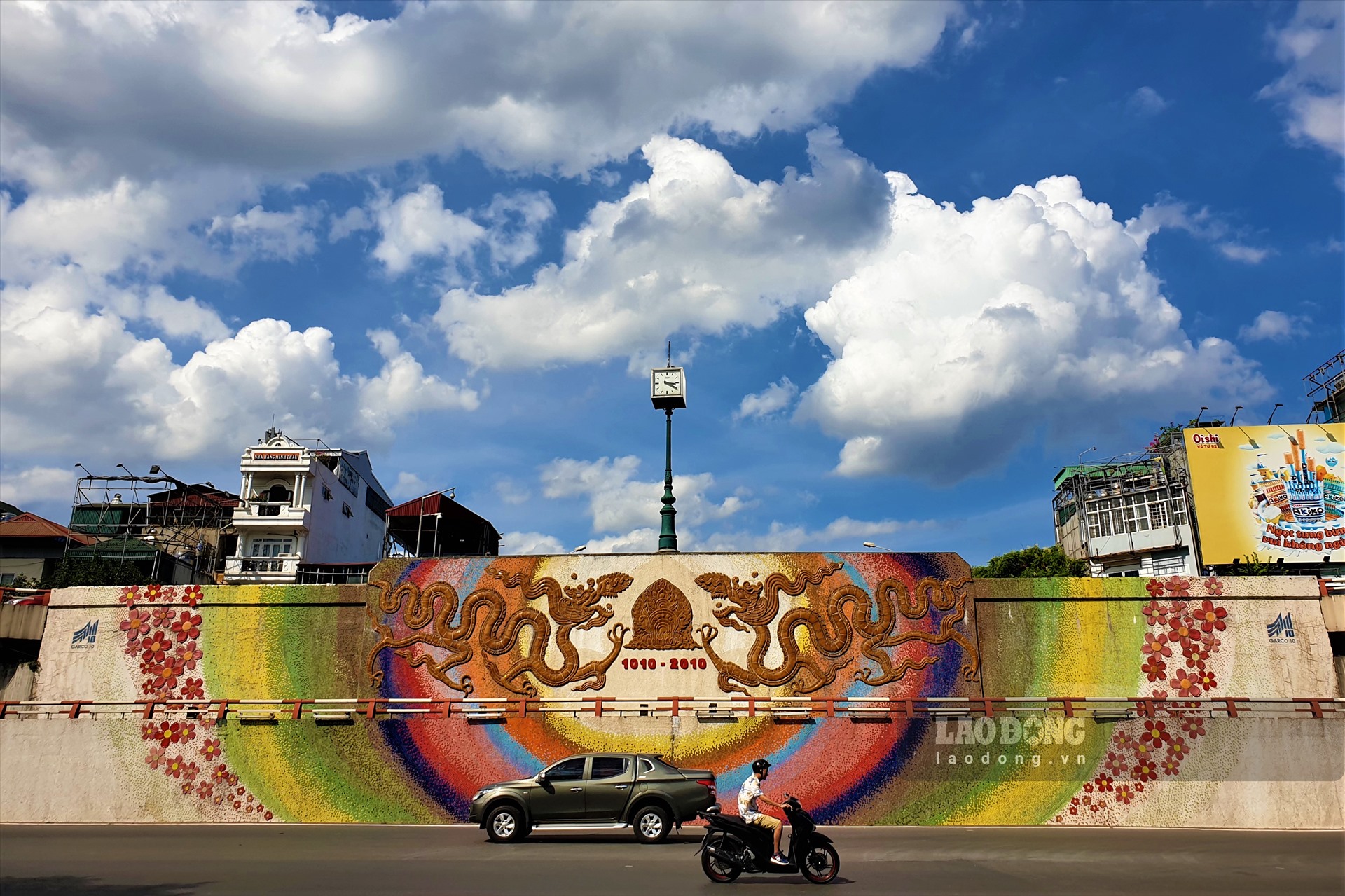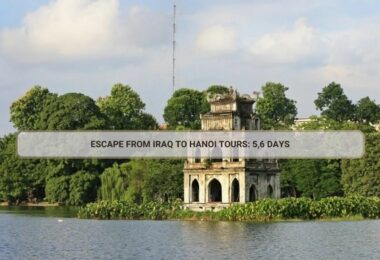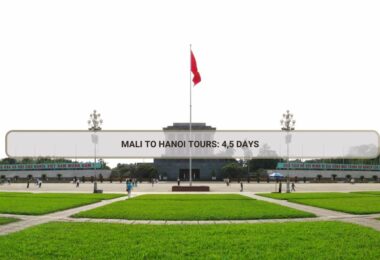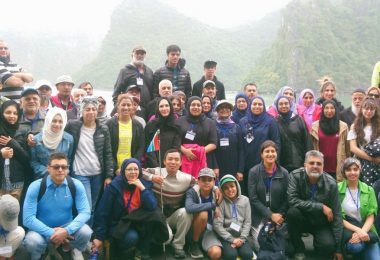Hanoi Ceramic Mosaic Mural in Hanoi, or Hanoi Ceramic Road (Vietnamese: Con đường Gốm sứ), is a ceramic mosaic mural along the walls of the Red River dike system in the city of Hanoi, northern Vietnam.
With a length of about 6.5 kilometers, the ‘Ceramic Road’ is one of the major projects that were developed on the occasion of the Millennial Anniversary of Hanoi Capital.
The history of ceramic Hanoi:
The Hanoi Ceramic Road originated with the journalist Nguyễn Thu Thủy, who won a prize in the Hanoi architecture contest for her idea of transforming the dike system around Hanoi into a ceramic mosaic.
The work of decoration began in 2007 for the dike wall of about 6.000m in length and 0.95m in height which runs along the road of Âu Cơ, Nghi Tàm, Yên Phụ, Trần Nhật Duật, Trần Quang Khải, Trần Khánh Dư and terminates at the pier of the Long Biên Bridge. She was supported by the Ford Foundation, which funded the first 450 meters (1,480 ft) of the wall; and the planning, training, and infrastructure needed to complete the project. The Ceramic Road was planned to be finished in 2010 to commemorate the Millennial Anniversary of Hanoi in October 2010.
Participating in the work of decoration are not only Vietnamese artists but also foreign embassies and cultural centers in Hanoi such as the Goethe-Institut, Alliance française L’espace, British Council, Società Dante Alighieri Date Centre, and other cultural centers of Russia and South Korea.








































